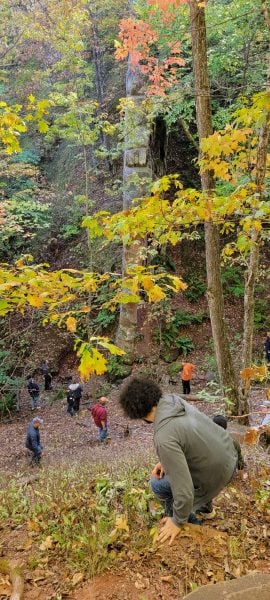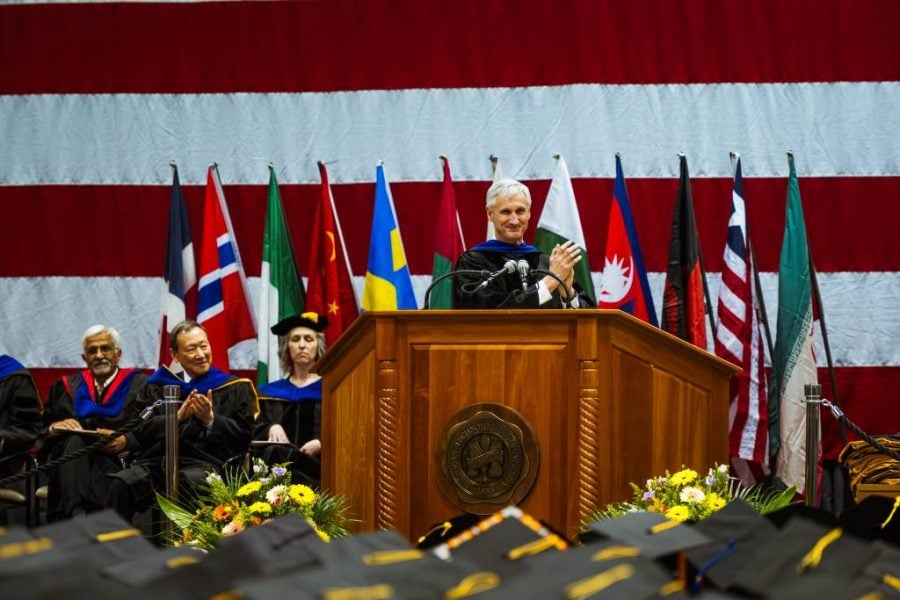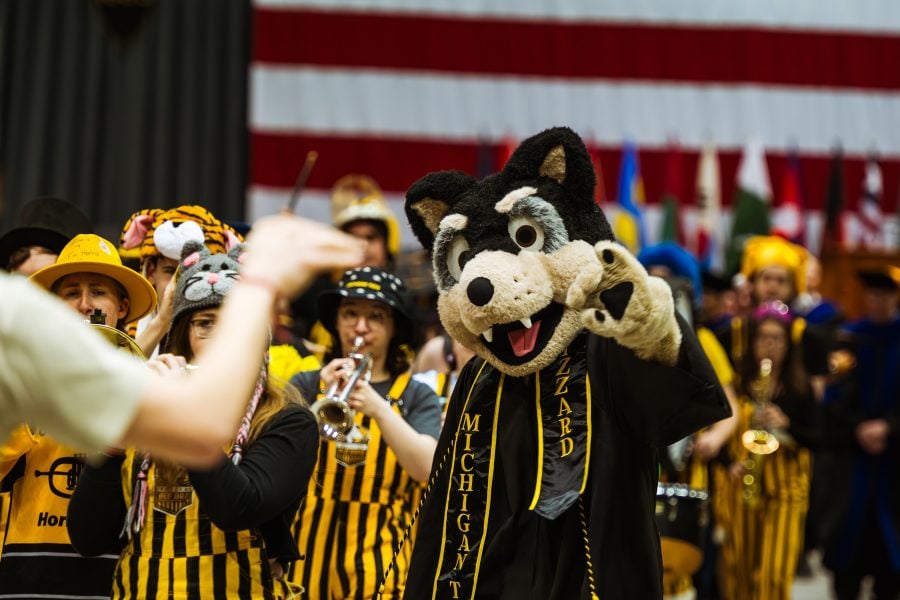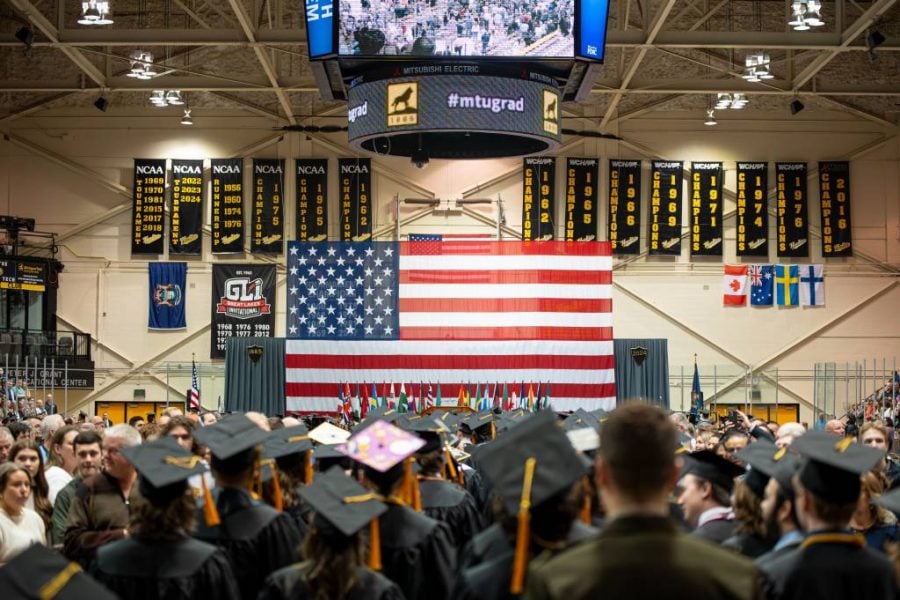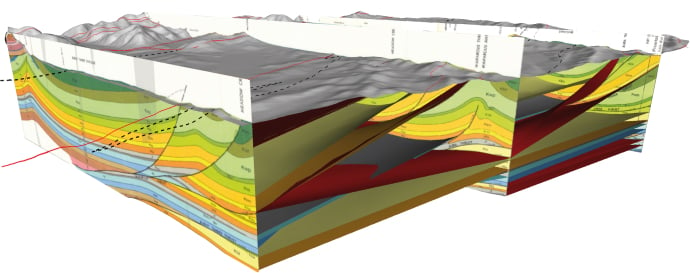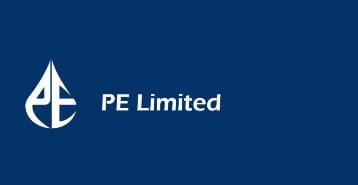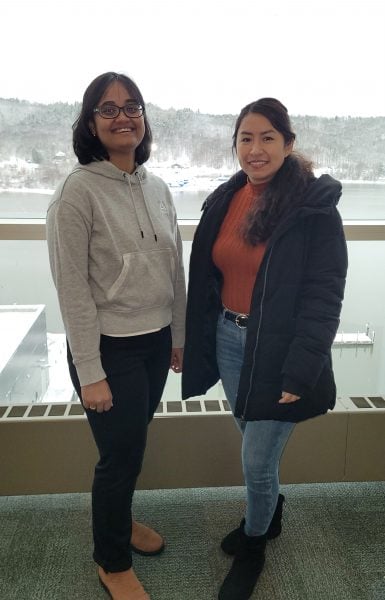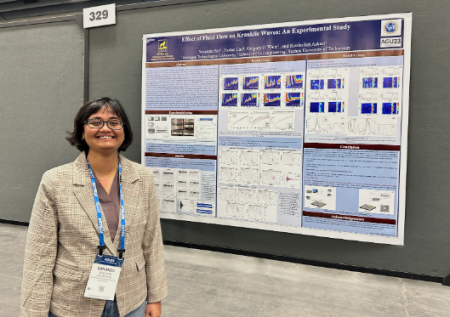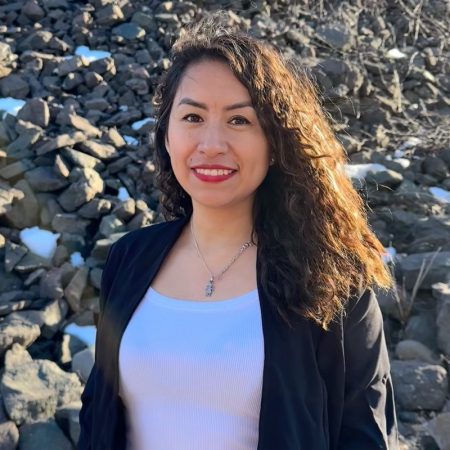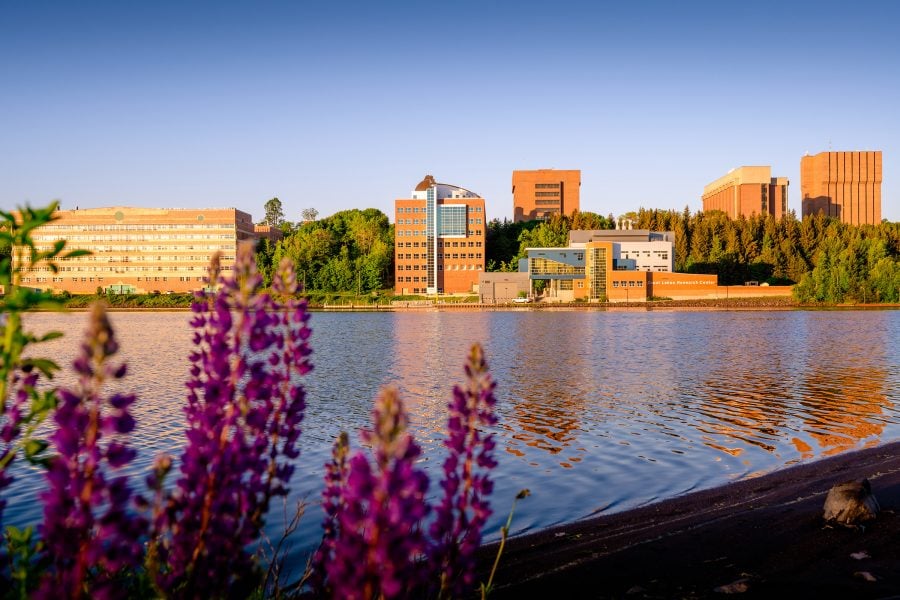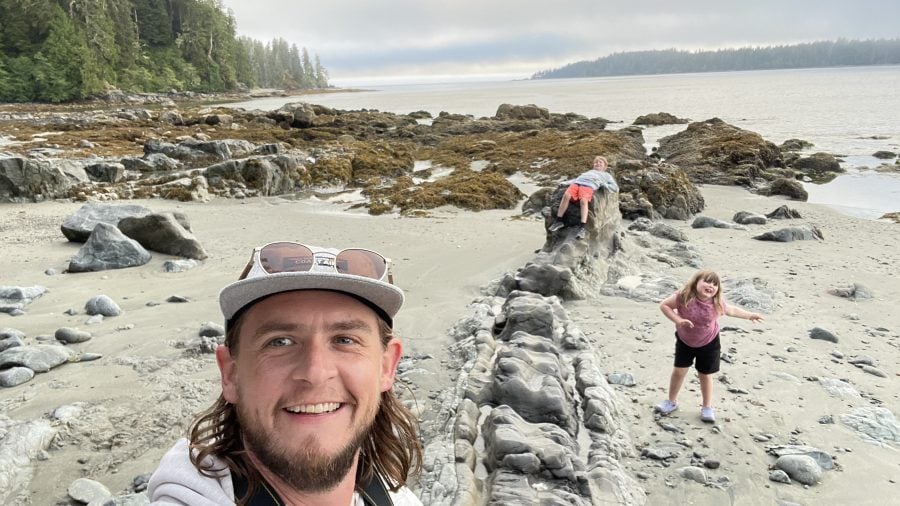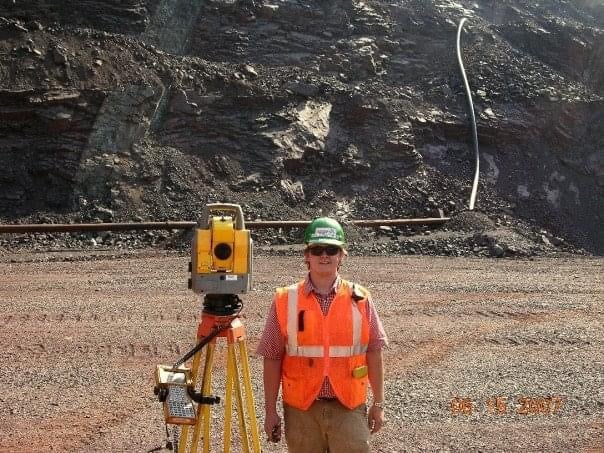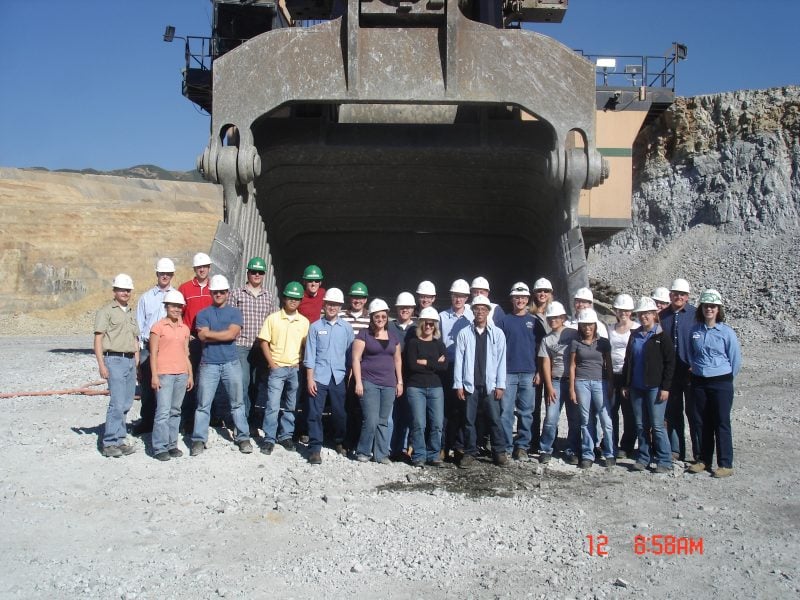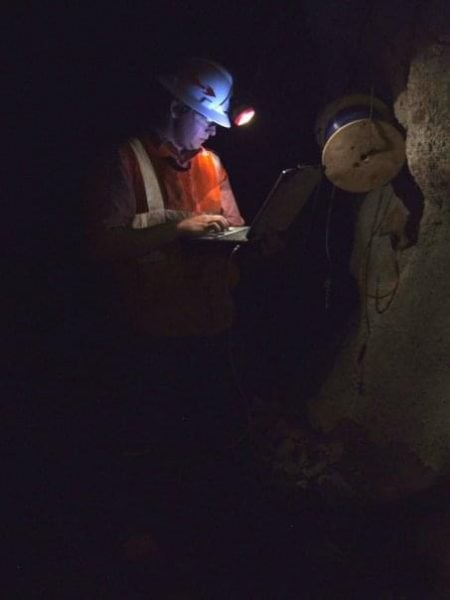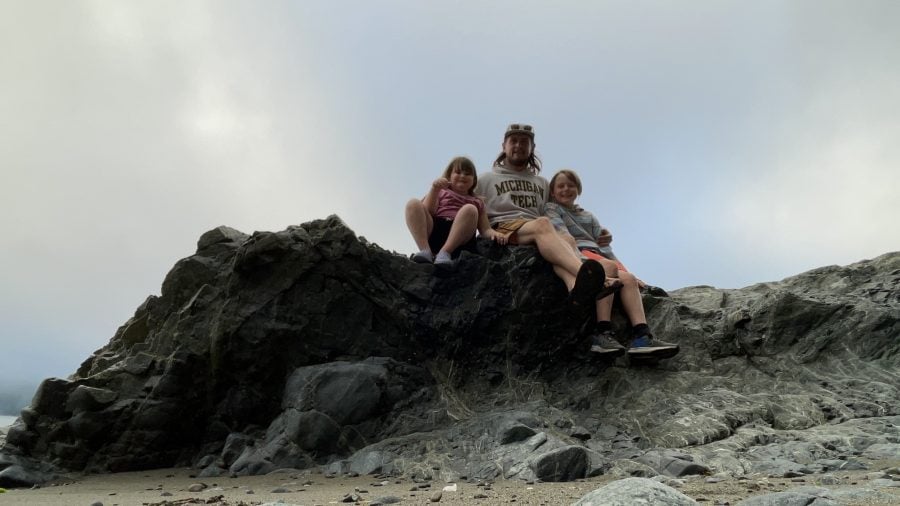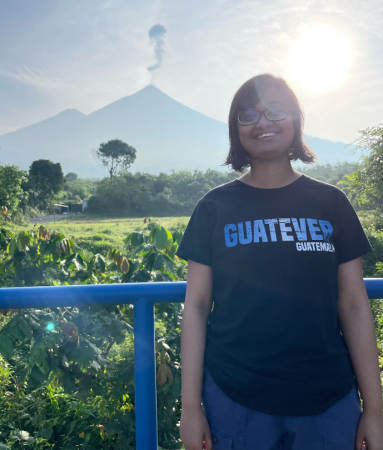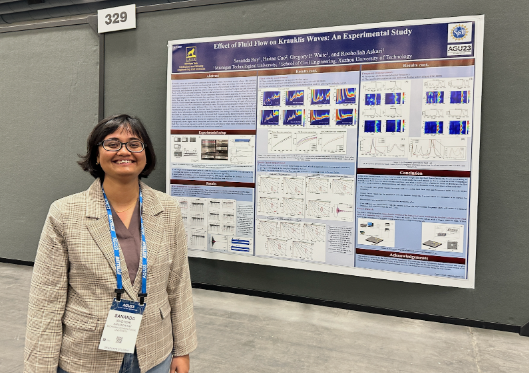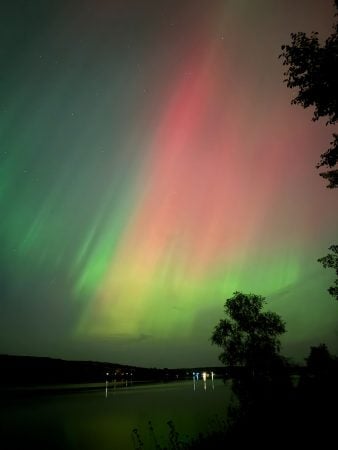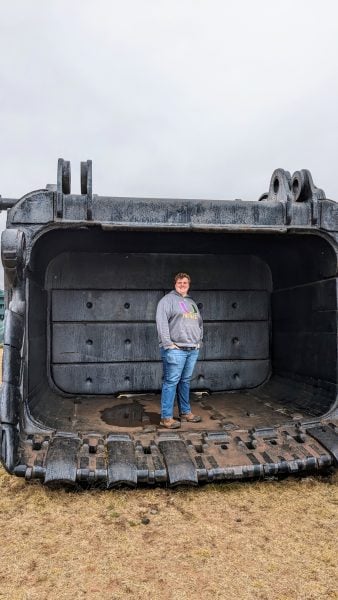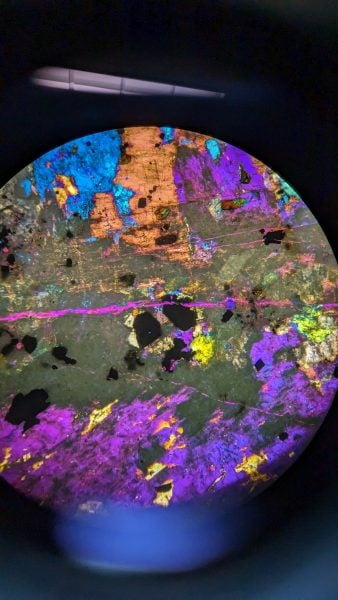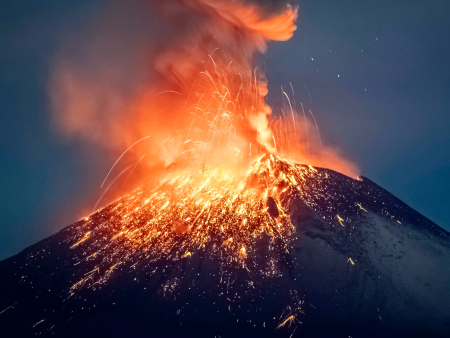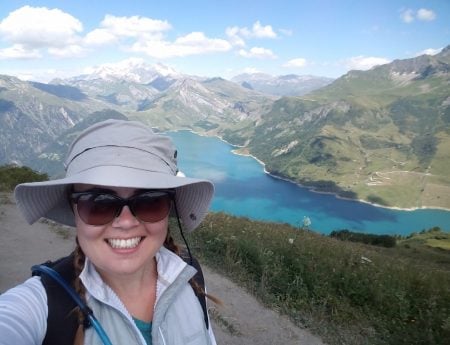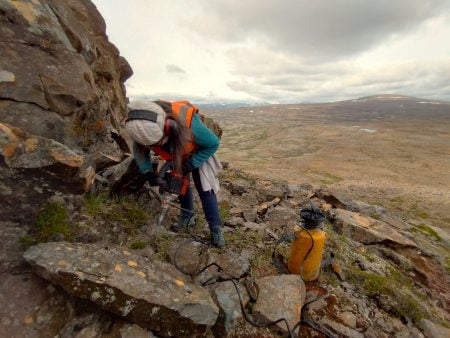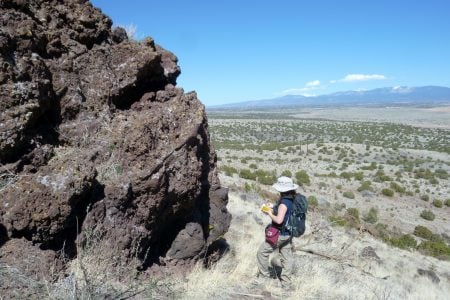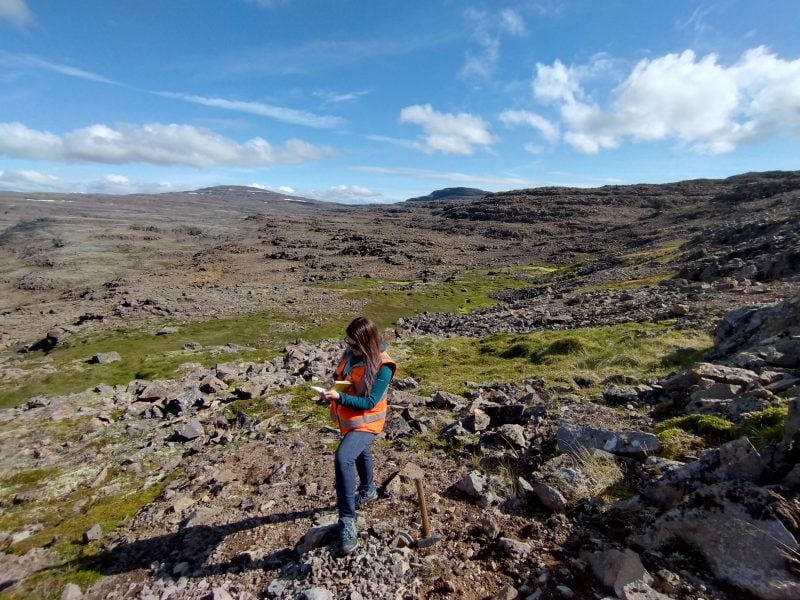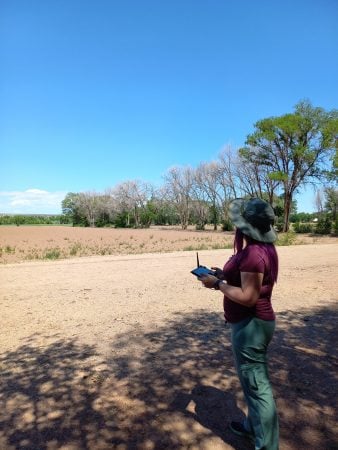A famous geological spot, the Natural Wall (located on private property!), is a resistant bed of the Jacobsville Sandstone that has been turned on its side to nearly vertical. This sandstone, a bacon-looking rock, is a Global Heritage Stone Resource (GHSR). This initiative aims to expand the acknowledgment of stones used in constructing heritage sites in emerging countries. The GHSR designation is a scientific effort to promote the geological understanding, utilization, and preservation of historically significant natural stones worldwide. This designation is overseen by the Heritage Stone Subcommission of the International Union of Geological Sciences in collaboration with the International Association for Engineering Geology and the Environment.
Michigan Tech students gain practical, hands-on experience visiting the Natural Wall in their Depositional Systems (GE3100) lab. Learn more about this unique geological feature, and explore our list of current undergraduate and graduate courses the GMES Department offers.
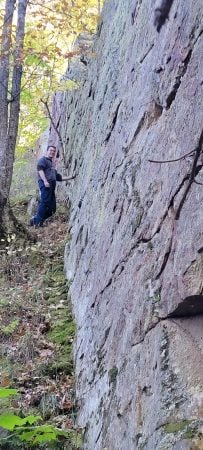
More about GE3100 – Explore the dynamic world of sedimentary processes and learn to decode the Earth’s history through sedimentary rocks, climate, sea level, and tectonic shifts.
- What majors require it? Geology, Applied Geophysics, and Geological Engineering. Forestry can use as an Environmental Directed Elective.
- How many credits? 3
- Semesters offered? Fall
- Prereqs? Understanding the Earth (GE2000), Intro to Petrology (GE2310)
The instructor is Jeremy Shannon, a GMES Teaching Professor. Jeremy earned his BS in Geological Engineering from MTU in 1994, his MS in Geology in 1996, and his Ph.D. in 2006. He has also instructed courses such as GE2000 Understanding the Earth, GE2100 Environmental Geology, GE3050 Structural Geology, and GE4090 Field Geophysics.
Catalog Description: Introduction to sedimentary processes and their products. Investigates the physical processes controlling sedimentation along with principles of correlation and interpretation of strata. Focuses on interpreting sedimentary rocks as a record of climate, sea level, and tectonic change.
Do you need help with the material? The Geo Learning Center is here to help!
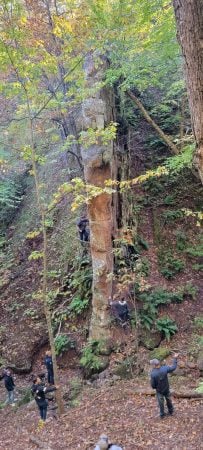
Standing tall and showcasing geological history, the Natural Wall is a striking example of the Jacobsville Sandstone, a Global Heritage Stone Resource. Michigan Tech students get hands-on experience exploring this unique formation in their GE3100 lab, unlocking the secrets of Earth’s past through sedimentary rocks and processes. Find this interesting? Read on to learn how the Depositional Systems class may interest you!
This is private property, so kindly avoid trespassing. Interested in learning more? Apply now.
Sources:
https://www.mtu.edu
https://www.geo.mtu.edu/KeweenawGeoheritage/The_Fault/Nat_Wall.html
https://www.youtube.com/watch?v=rxspwJDNz48
https://www.unesco.org/en/iggp/igcp-projects/637
https://www.iugs.org/
https://iaeg.info/
https://www.youtube.com/watch?v=-X3EE_jNDRg
https://www.copperrange.org/natural.htm
